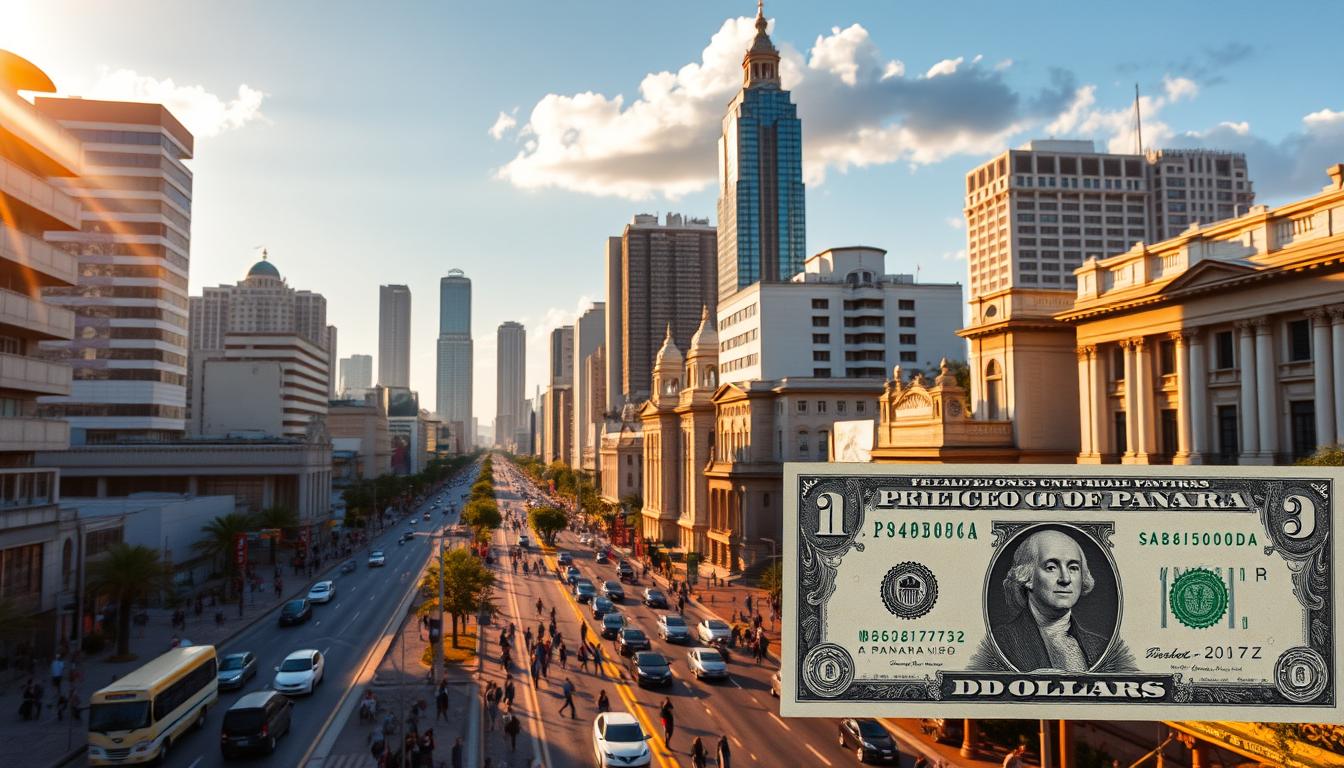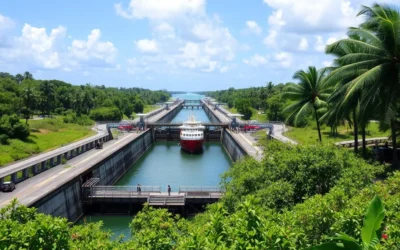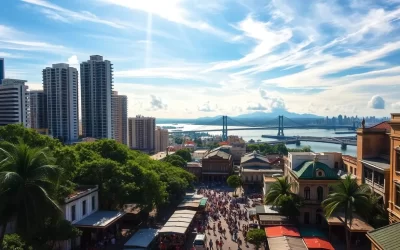✓ Accommodations✓ Flights✓ Rental Cars✓ Tours & Activities
Did you know that Panama is one of the few countries in the world with a dual-currency system? Here, the Panamanian Balboa (PAB) and the U.S. dollar coexist seamlessly, both accepted in everyday transactions. This unique setup makes managing your money easier but also requires some planning to avoid unnecessary costs.
Since 1941, the U.S. dollar has been Panama’s official currency, with the Balboa pegged at a 1:1 exchange rate. This means you can use both currencies interchangeably, but understanding how to navigate this system can save you time and money during your trip.
Whether you’re withdrawing cash from an ATM, paying with a debit card, or tipping at a local restaurant, knowing the ins and outs of Panama’s currency environment is essential. This guide will help you make the most of your budget while exploring this vibrant destination.
Welcome to Your Ultimate Currency Guide in Panama
Understanding the currency system in Panama can make your trip smoother and more budget-friendly. Whether you’re shopping at local markets or dining at a restaurant, knowing how to handle money ensures a stress-free experience.
Why Knowing Panama Currency Matters
Every transaction you make during your stay will involve either the Panamanian Balboa (PAB) or the U.S. dollar. Since both are accepted, you’ll need to decide which currency to use for each purchase. This dual system can save you money if you plan ahead.
For example, using a debit card with no foreign transaction fees can help you avoid extra costs. Also, withdrawing cash from an ATM in U.S. dollars is often more convenient than exchanging money at a currency exchange booth.
An Overview of the Balboa and US Dollar System
The Panamanian Balboa is pegged to the U.S. dollar at a 1:1 exchange rate. This means you can use both currencies interchangeably without worrying about fluctuating rates. However, it’s important to note that the Balboa is primarily used for coins, while paper money is almost exclusively in U.S. dollars.
Here’s a quick comparison of the two currencies:
| Currency | Usage | Advantages |
|---|---|---|
| Panamanian Balboa (PAB) | Coins for small transactions | No need to convert from USD |
| U.S. Dollar (USD) | Paper money for larger purchases | Widely accepted and familiar |
By understanding this system, you can make informed decisions about your budget and avoid unnecessary fees. For instance, carrying small amounts of both currencies ensures you’re prepared for any situation, whether it’s tipping at a hotel or paying for a taxi.
Historical Evolution of Panama Currency
The story of Panama’s currency is a fascinating journey through history. From its early days as part of Colombia to its modern dual-currency system, the evolution of money here reflects the country’s unique political and economic landscape.
From the Colombian Peso to the Panamanian Balboa
Before gaining independence in 1903, Panama used the Colombian peso as its official currency. During the Thousand Days’ War (1899-1903), Colombia faced hyperinflation, with rates soaring to 389% in 1901. This instability led Panama to seek a more reliable monetary system.
After independence, the Panamanian Balboa (PAB) was introduced in 1904, replacing the peso. Named after the Spanish explorer Vasco Núñez de Balboa, the new currency was pegged to the U.S. dollar at a 1:1 exchange rate. This move ensured stability and laid the foundation for Panama’s modern financial system.
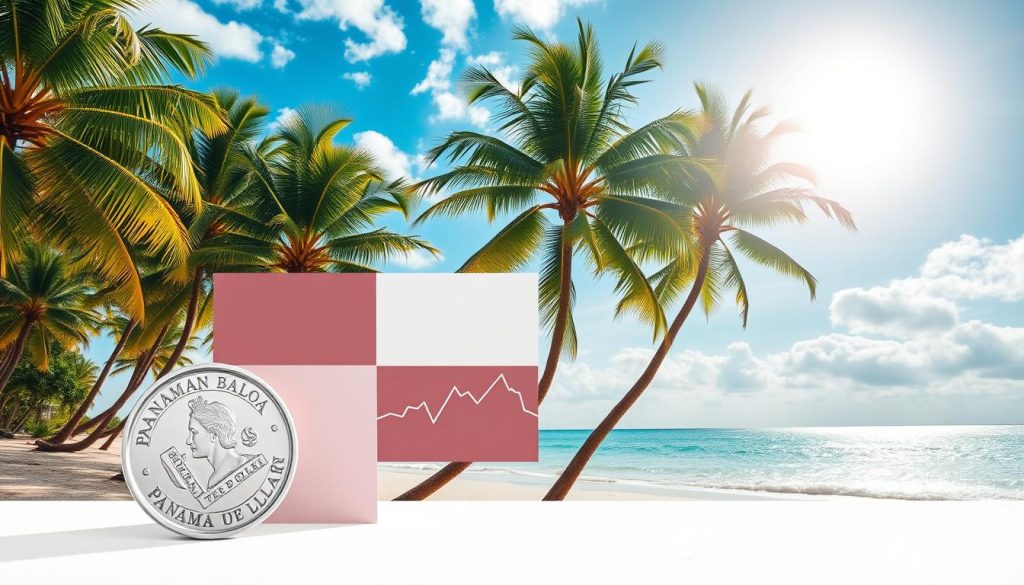
The Influence of the U.S. Dollar and Canal Zone History
The U.S. dollar’s role in Panama’s economy began with the construction of the Panama Canal. In 1904, the U.S. paid $10 million for land rights, solidifying its economic influence. The Canal Zone, a U.S.-controlled area, used the dollar exclusively, further integrating it into Panama’s financial system.
During World War II, the dual-currency system became official. In 1941, President Arnulfo Arias issued paper currency backed by gold, known as the “Seven Days’ Notes.” These notes were in circulation for only a week before a coup halted their use. Despite this, the U.S. dollar remained dominant, and the Balboa was primarily used for coins.
Today, the dual-currency system continues to shape Panama’s economy. Understanding this history helps you appreciate the seamless blend of the Balboa and the dollar in everyday transactions.
Panama: Ultimate Travelers Guide to Currencies & Payments
Navigating Panama’s unique dual-currency system can simplify your travel experience. Here, the Panamanian Balboa (PAB) and the U.S. dollar are used interchangeably, making it easy to manage your money during your stay. This system is a result of historical decisions that continue to shape the country’s economy today.
In Panama, paper money is almost exclusively in U.S. dollars, while coins are issued in Balboas. The two currencies are pegged at a 1:1 exchange rate, so you don’t need to worry about fluctuating rates. This setup ensures that both forms of currency are equally accepted in everyday transactions.
How the Dual System Works in Practice
When you’re out exploring, you’ll notice that prices are often listed in both currencies. For example, a meal at a local restaurant might cost $10 or 10 Balboas. You can pay with either, but it’s helpful to carry small amounts of both for convenience.
- U.S. Dollars: Ideal for larger purchases like hotel stays or tours.
- Panamanian Balboa: Perfect for smaller transactions like tipping or buying snacks.
Using a debit card with no foreign transaction fees can save you costs during your trip. Additionally, withdrawing cash from an ATM in U.S. dollars is often more convenient than exchanging money at a currency exchange booth.
Why Panama Relies on U.S. Banknotes
Panama does not print its own paper money. Instead, it uses U.S. banknotes, which are widely recognized and trusted. This decision dates back to the construction of the Panama Canal, when the U.S. dollar became deeply integrated into the local economy.
For travelers, this means you’ll always have access to a familiar currency. However, it’s a good idea to carry some Balboa coins for smaller payments or tips. This blend of currencies ensures you’re prepared for any situation during your trip.
Currency Exchange and Rates in Panama
Getting the best exchange rates can make your trip more affordable. In Panama, the Panamanian balboa (PAB) and the U.S. dollar are used interchangeably, but understanding how to navigate the currency exchange system can save you money.

How to Monitor the USD/PAB Mid-Market Rate
The mid-market rate is the global standard for currency trading. It’s the rate banks use when exchanging money internationally. Tracking this rate ensures you get the most value for your money.
Use online tools like XE or Wise to monitor the live USD/PAB mid-market rate. These platforms provide real-time updates, helping you decide the best time to exchange your currency.
“Always compare rates before exchanging money. Even small differences can add up over time.”
Tips for Secure and Cost-Effective Currency Exchange
Here are some practical tips to save on currency exchange:
- Avoid airport and hotel exchanges: They often charge higher fees and offer less favorable rates.
- Compare providers: Check rates at local banks or reputable exchange offices like Universal Exchange or INMONEX.
- Order PAB in advance: Some banks allow you to order Panamanian balboa before your trip, saving you time and costs.
Here’s a quick comparison of popular exchange options:
| Provider | Rating | Key Feature |
|---|---|---|
| Universal Exchange | 4.5/5 | Competitive rates |
| INMONEX | 4.3/5 | Low fees |
| EUROCASH Plaza Concordia | 5/5 | Excellent service |
By following these tips, you can avoid unnecessary fees and make informed decisions about your money. Whether you’re exchanging cash or using a card, planning ahead ensures a smooth and cost-effective experience.
Payment Methods in Panama: Cash, Cards, and More
Managing your finances during your trip can be straightforward with the right payment methods. Whether you prefer using cards or carrying cash, understanding your options ensures a smooth experience. This section covers the pros and cons of each method and provides tips to help you make the best choices.
Using Debit and Credit Cards Effectively
Cards are widely accepted in urban areas, especially in hotels, restaurants, and larger stores. Major brands like Visa and Mastercard are commonly used, making it convenient for tourists. However, it’s essential to check for foreign transaction fees with your bank to avoid unnecessary costs.
Here are some tips for using cards effectively:
- Notify your bank: Inform your bank about your travel dates to avoid card blocks.
- Carry a backup card: In case of theft or loss, having a second card ensures you’re not stranded.
- Watch for dynamic currency conversion: Some merchants may offer to charge you in your home currency, but this often comes with higher exchange rates.
The Role of Cash in Local Transactions
While cards are convenient, cash is still king in smaller shops and rural areas. The Panamanian Balboa (PAB) is primarily used for coins, while U.S. dollars are the standard for paper money. Carrying small amounts of both ensures you’re prepared for any transaction.
Here’s when cash is preferred:
- Small purchases: Buying snacks, tipping, or paying for taxis.
- Local markets: Many vendors may not accept cards.
- Emergencies: Having cash on hand can be a lifesaver if ATMs are unavailable.
“Always carry a mix of cards and cash to cover all your needs during your trip.”
By understanding the strengths of each payment method, you can navigate your travel with confidence. Whether you’re dining at a fancy restaurant or shopping at a local market, being prepared ensures a hassle-free experience.
Navigating ATMs and Bank Transactions in Panama
Accessing your funds safely while traveling is crucial for a stress-free experience. In Panama, ATMs are widely available, but knowing how to use them securely can save you time and money. This guide covers essential tips for managing your cash and card transactions effectively.
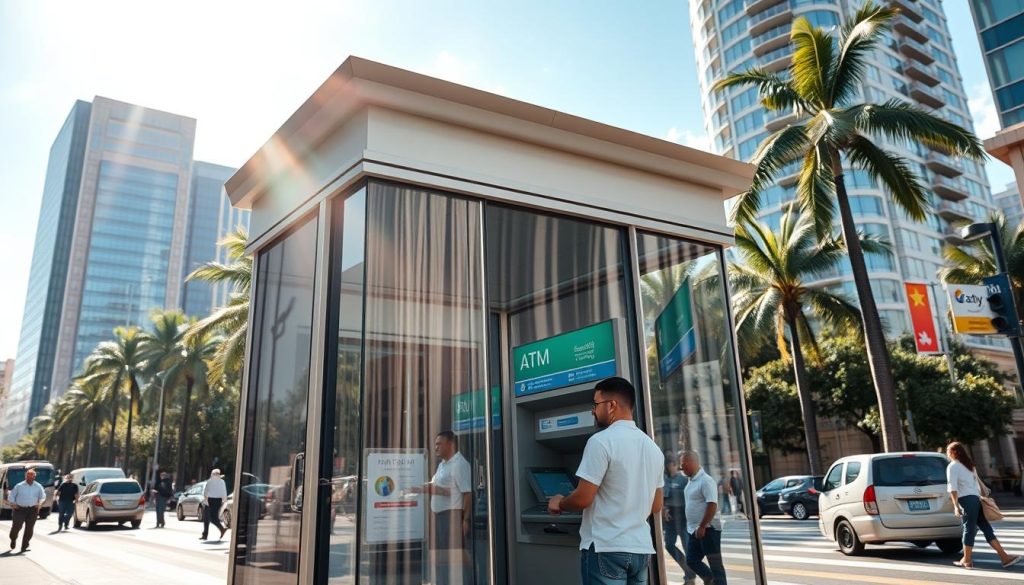
Secure ATM Usage and Best Practices
When using ATMs, always choose well-lit, populated locations. This reduces the risk of theft or fraud. Stick to machines located inside banks or reputable establishments, as they are more secure.
Check for any hidden fees before withdrawing money. Some ATMs charge a service fee of around $5 per transaction. To avoid extra costs, use ATMs affiliated with major banks like Banco Nacional de Panamá or Banistmo.
“Always monitor your bank alerts after each withdrawal to ensure your account remains secure.”
Here are additional tips for safe ATM usage:
- Notify your bank: Inform your bank about your travel dates to prevent card blocks.
- Use chip-enabled cards: These are more secure and widely accepted in Panama.
- Carry small amounts: Withdraw only what you need to minimize risks.
By following these practices, you can confidently manage your currency needs while exploring Panama. Whether you’re withdrawing cash or using a card, staying informed ensures a smooth and secure experience.
Budgeting Your Trip: How Much Money to Bring for Panama
Planning your budget for a trip can make all the difference in how you experience your destination. Knowing how much to spend daily ensures you stay on track without overspending. Whether you’re a budget traveler or prefer luxury, this guide helps you estimate your expenses and manage your money effectively.
Estimating Daily Expenses and Trip Costs
On average, a mid-range traveler spends about $93 (B/.93) per day. This includes meals, transportation, and activities. Budget travelers can get by with $37 (B/.37) daily, while luxury travelers may spend up to $230 (B/.230).
Here’s a breakdown of daily costs:
- Meals: $37 (B/.37) per person, with breakfast averaging $7-$11 and dinner $13-$30.
- Transportation: $11 (B/.11) daily for local travel.
- Accommodation: $69 (B/.69) per night for mid-range hotels.
For a one-week trip, expect to spend around $651 (B/.651) per person. Longer stays, like a month, can cost $2,790 (B/.2,790).
Planning for Accommodation, Food, and Transportation
Accommodation costs vary widely. Budget stays average $22 (B/.22) per night, while luxury hotels can cost $133 (B/.133). Mid-range options are around $55 (B/.55) nightly.
Food is another key expense. Street food or fast food costs about $6 (B/.6), while a mid-range meal averages $36 (B/.36). For transportation, public options are affordable, but taxis or private transfers add to your costs.
Here’s a quick comparison of travel styles:
| Travel Style | Daily Cost | Key Features |
|---|---|---|
| Budget | $49 (B/.49) | Affordable stays, street food, public transport |
| Mid-Range | $125 (B/.125) | Comfortable hotels, local dining, occasional taxis |
| Luxury | $311 (B/.311) | High-end stays, fine dining, private transfers |
By aligning your spending with your itinerary, you can avoid overspending and enjoy a stress-free trip. Carry a mix of cash and cards to cover all your needs, and always check for foreign transaction fees to save on costs.
Traveler Tips for Managing Money in Panama
Traveling smart means keeping more of your cash for experiences, not fees. Managing your money effectively can make your trip smoother and more enjoyable. Here are some insider tips to help you minimize costs and avoid common pitfalls.
Minimizing Fees and Avoiding Dynamic Currency Conversion
One of the easiest ways to save on costs is by reducing international transaction fees. Use a card with no foreign exchange fees to avoid extra charges. Notify your bank about your travel dates to prevent your card from being blocked.
Dynamic currency conversion (DCC) is another trap to watch out for. Some merchants may offer to charge you in your home currency, but this often comes with poor rates. Always opt for local currency pricing to get the best deal.
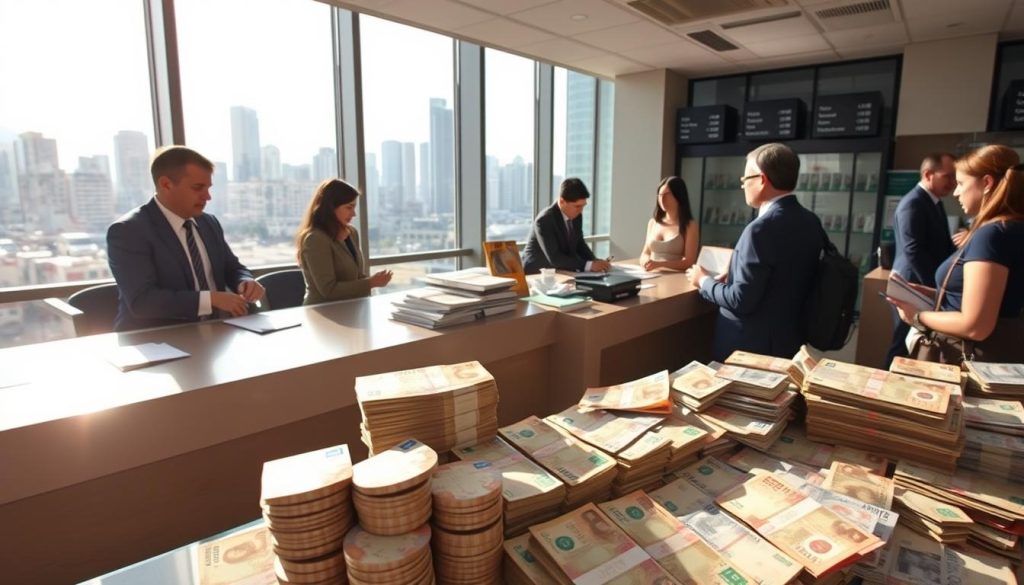
| Method | Pros | Cons |
|---|---|---|
| Debit Card | Low fees, widely accepted | May have withdrawal limits |
| Credit Card | Rewards points, fraud protection | Higher foreign transaction fees |
| Cash | No fees for small transactions | Risk of theft or loss |
Carry a mix of cash and cards to cover all your needs. Withdraw small amounts of money frequently to avoid carrying too much at once. Compare exchange rates at local banks or reputable providers to get the best value.
“Always choose local currency when paying with a card to avoid unnecessary fees.”
By following these tips, you can keep more of your money for enjoying your trip. Whether you’re dining out or shopping, smart payment choices ensure a stress-free experience.
Digital Tools for Currency Management in Panama
Managing your funds digitally while traveling can save you time and reduce stress. With the right tools, you can handle currency conversions, track exchange rates, and make payments seamlessly. This section explores how digital solutions can simplify your financial management during your trip.
Benefits of Travel Cards and Multi-Currency Accounts
Travel cards and multi-currency accounts are game-changers for managing money abroad. These tools allow you to hold multiple currencies in one account, making it easy to switch between PAB and USD without extra fees.
Providers like Wise offer competitive exchange rates and low transaction costs. With a travel card, you can withdraw cash from ATMs or pay directly at merchants, all while avoiding hidden costs.
Here’s a quick comparison of popular options:
| Tool | Key Feature | Best For |
|---|---|---|
| Wise Multi-Currency Account | Low fees, real-time rates | Frequent travelers |
| Revolut Travel Card | Budget tracking, instant notifications | Budget-conscious travelers |
| PayPal Multi-Currency | Wide acceptance, secure transactions | Online payments |
Using Online Platforms to Track Exchange Rates
Staying updated on exchange rates ensures you get the best value for your money. Platforms like XE and Wise provide real-time updates, helping you decide when to convert currency.
These tools also offer transparency in transactions, showing you exactly how much you’re paying in fees. By monitoring rates, you can avoid unfavorable conversions and save on costs.
“Always check exchange rates before converting currency to maximize your budget.”
Integrating these digital tools into your travel strategy ensures a smooth and cost-effective experience. Whether you’re managing cash or using a card, these solutions make financial management hassle-free.
Conclusion
Mastering your finances abroad ensures a smoother journey. Understanding the dual-currency system, where PAB and USD coexist, helps you manage money effectively. Budgeting wisely and choosing the right payment methods, like cards with no foreign fees, can save you costs.
Use digital tools like Wise or Revolut to track exchange rates and avoid unnecessary transactions. Carrying a mix of cash and cards ensures you’re prepared for any situation. By applying these tips, you can explore with confidence, knowing your finances are well-managed.
With the right preparation, you’ll focus less on money and more on enjoying your travel experience. Stay informed, plan ahead, and make the most of your trip!
The above is subject to change.
Check back often to TRAVEL.COM for the latest travel tips and deals.
